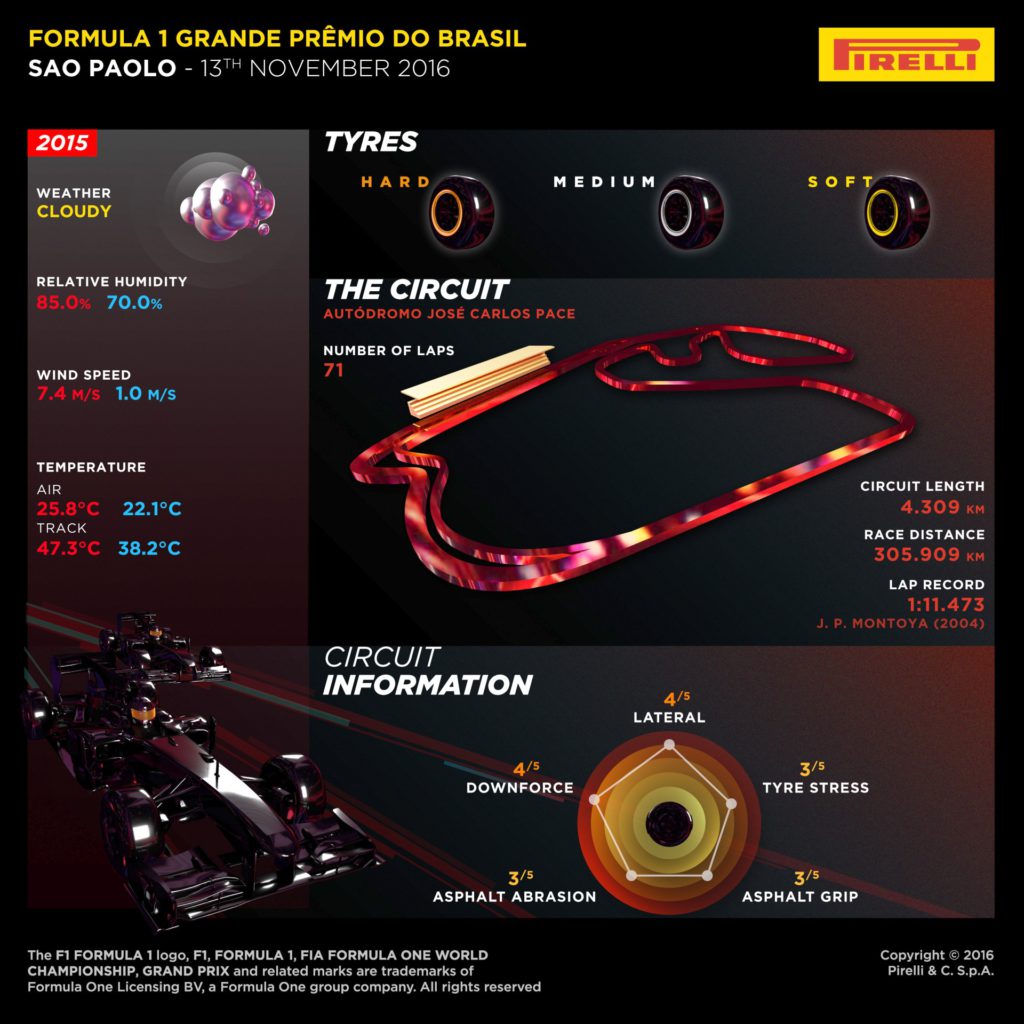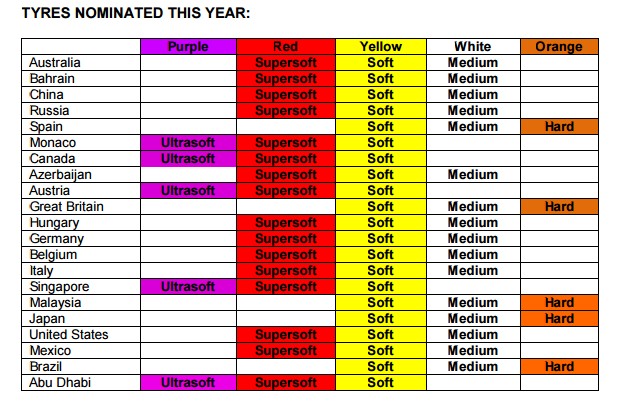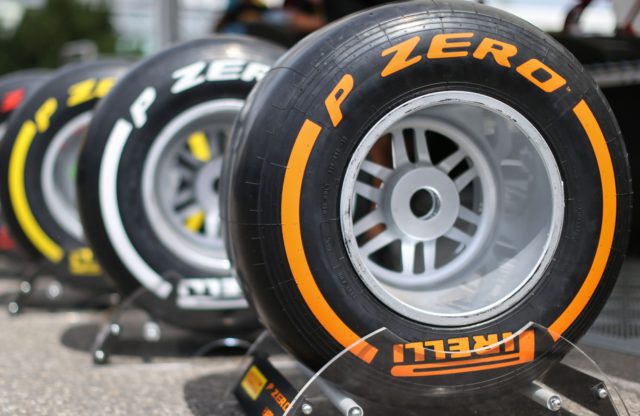The penultimate round of the world championship takes place at the intense, rapid and colourful Interlagos circuit. The track was resurfaced relatively recently. But it still provides a massive challenge with a constant series of high-energy corners and the potential for some very high temperatures. As a result, the P Zero Orange hard tyre makes its final appearance of the 2016 season alongside the medium and the soft. A combination last seen in Japan. The question for the drivers is with these tyres, are they are going to make two or three pitstop for a change.
HOW IT WAS A YEAR AGO:
Nico Rosberg won the 71-lap race with a three-stop strategy, starting on soft and then stopping for mediums on laps 13, 33 and 48. The top three all stopped three times.
Best alternative strategy: Kimi Raikkonen finished fourth with a two-stop strategy, starting on soft and then switching to mediums on laps 12 and 46.
THE THREE NOMINATED COMPOUNDS:
Orange hard: used for only the fifth time in 2016. Mandatory set: must be available for the race.
White medium: another mandatory set, which is set to form a key part of the race strategy.
Yellow soft: despite the heavy demands of the track, this compound has raced in Brazil before.

THE CIRCUIT FROM A TYRE POINT OF VIEW:
– Interlagos is the second-shortest lap of the year. But probably the most intense as the cars are constantly cornering and dealing with traffic. This adds to the demands on the tyres.
– The resurfacing a couple of years ago increased grip levels and smoothed out the bumps.
– A very wide variety of weather conditions are possible, from intense heat to heavy rain.
– Interlagos is one of the few anti-clockwise circuits, with the right-rear tyre doing the most work.
– Tyres are often subjected to combined lateral and longitudinal forces, which increase demand.
“We’re seeing the hard tyres in Brazil for the first time since 2013. Which should prove to be very effective against the high-energy demands of the track, said the Pirelli Motorsport Director Paul Hembery. – In 2015 we had a three-stop race. So with the increase in performance and downforce this year, taking a harder tyre was the only sensible option to offer a number of different strategy variables. Balancing its durability against the extra performance of the softer compounds will hold the key to the race tactics. The weather will obviously play a big part in these calculations too.”


































